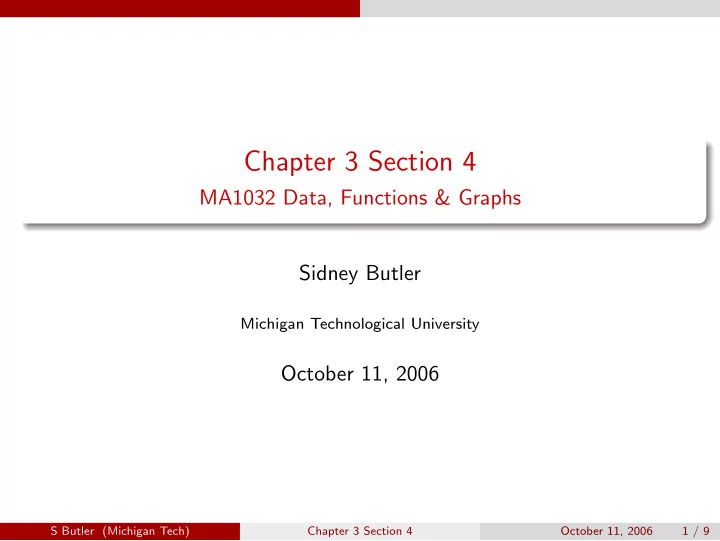

Chapter 3 Section 4 MA1032 Data, Functions & Graphs Sidney Butler Michigan Technological University October 11, 2006 S Butler (Michigan Tech) Chapter 3 Section 4 October 11, 2006 1 / 9
The number e Why? S Butler (Michigan Tech) Chapter 3 Section 4 October 11, 2006 2 / 9
Interchanging with the old 1 Q ( t ) = ab t now in light of e . 2 Annual effective growth factor 3 Continuous growth rate S Butler (Michigan Tech) Chapter 3 Section 4 October 11, 2006 3 / 9
Example Suppose that a lake is evaporating at a continuous rate of 3.5% per month. Find a formula that gives the amount of water remaining after t months. Determine what percentage the amount of water decreases each month. S Butler (Michigan Tech) Chapter 3 Section 4 October 11, 2006 4 / 9
e as a function y = f ( x ) = e x S Butler (Michigan Tech) Chapter 3 Section 4 October 11, 2006 5 / 9
Compound Interest � n � 1 + r P 0 n S Butler (Michigan Tech) Chapter 3 Section 4 October 11, 2006 6 / 9
Continuous Growth & Compound Interest Suppose a nominal interest rate of 20% is being compounded many times per year. Number of compounding periods Growth Factor 10 100 1000 10000 S Butler (Michigan Tech) Chapter 3 Section 4 October 11, 2006 7 / 9
Example Suppose that $500 is invested in an account earning 8% compounded continuously. 1 What is the effective annual rate? 2 Find a formula that gives the amount of money in the account after t years. S Butler (Michigan Tech) Chapter 3 Section 4 October 11, 2006 8 / 9
Summary 1 The number e 2 Continuous growth rates 3 Compound interest S Butler (Michigan Tech) Chapter 3 Section 4 October 11, 2006 9 / 9
Recommend
More recommend